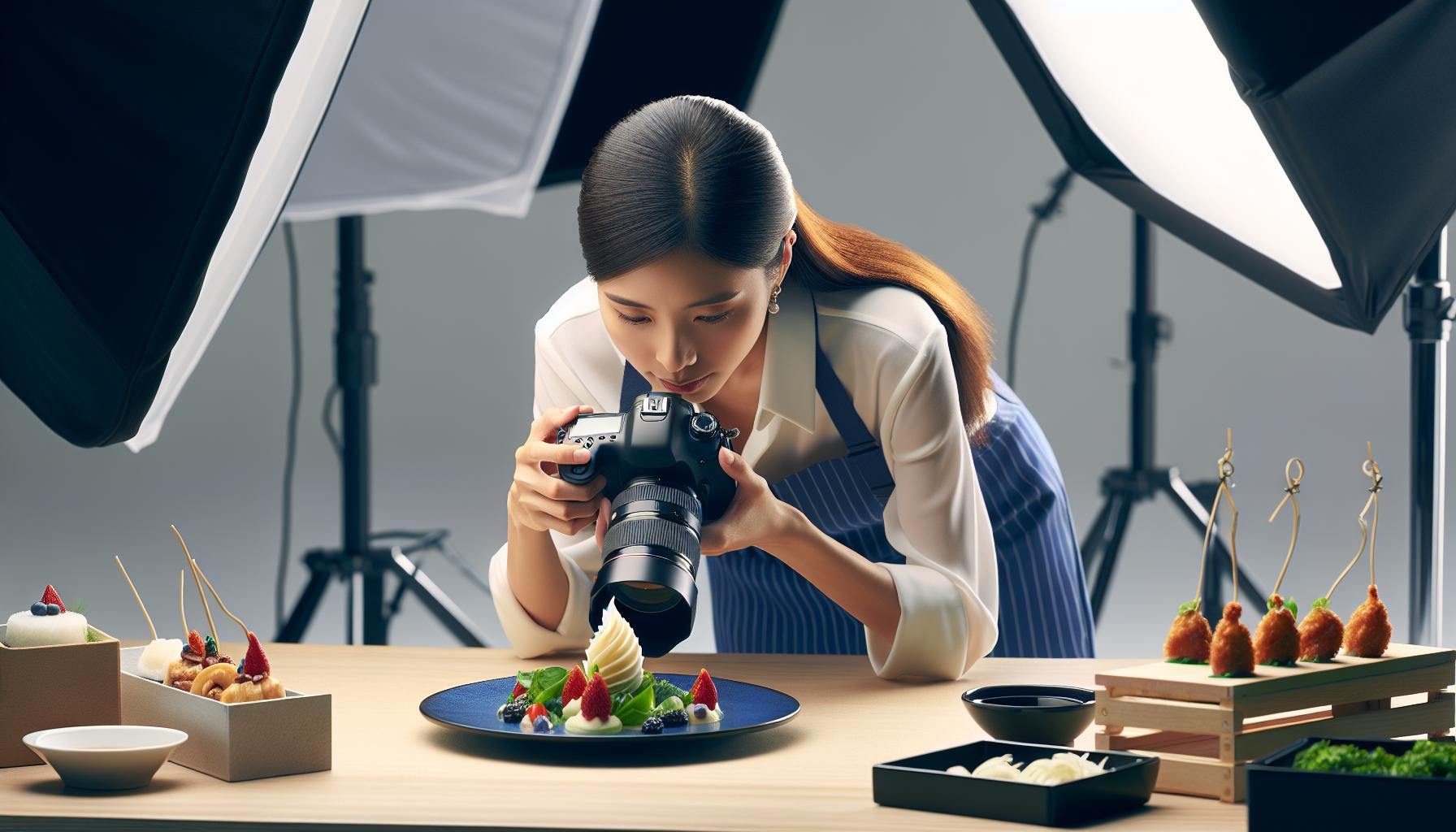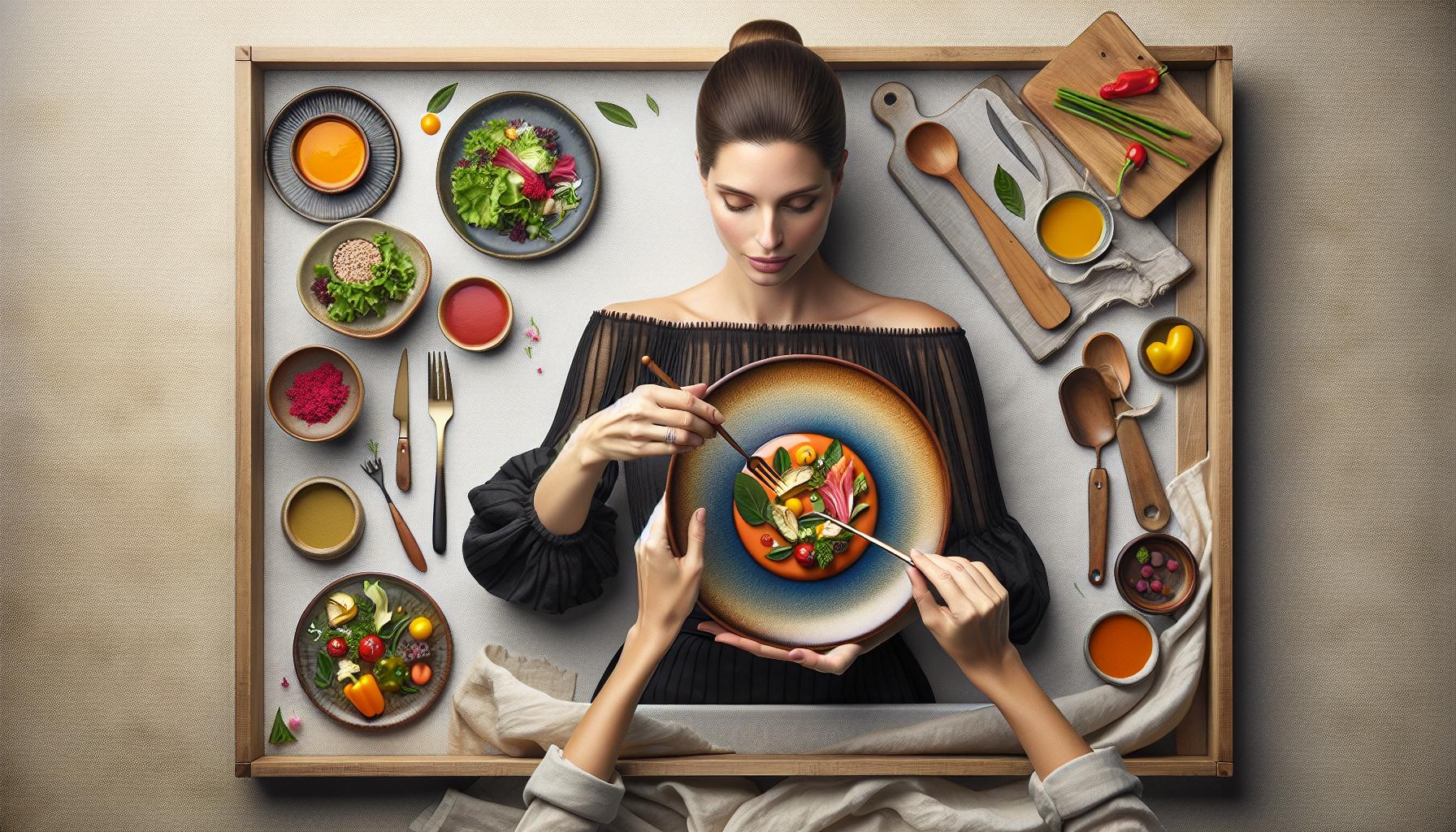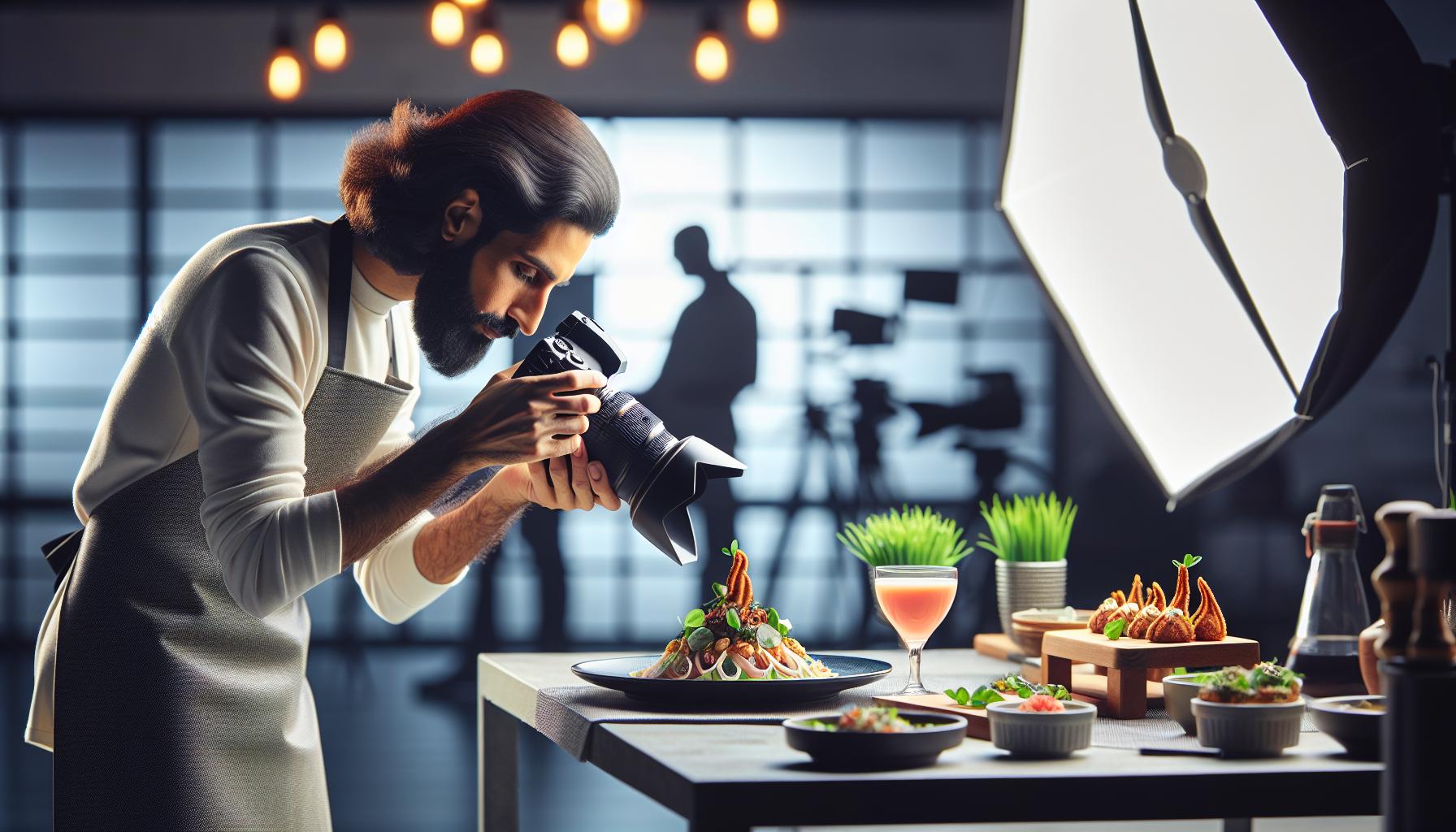Food photography isn’t just about snapping pictures of your lunch – it’s an art form that makes viewers’ mouths water and their stomachs growl. In today’s digital age where visual content reigns supreme commercial food photography has become essential for restaurants brands and food businesses looking to stand out in a crowded marketplace.
Behind every mouthwatering burger ad and perfectly plated pasta photo lies a world of technical expertise lighting mastery and creative vision. Professional food photographers don’t just capture images – they tell stories through carefully crafted compositions that trigger emotional responses and drive consumer behavior. From selecting the perfect garnish to manipulating steam and creating that irresistible cheese pull it’s all about making food look its absolute best even if it means using a few industry tricks along the way.
Food Commercial Photography
Food commercial photography creates compelling visual content for marketing food products services or brands. This specialized field combines technical expertise artistic vision with strategic marketing principles to showcase food in its most appetizing form.
Types of Food Commercial Photography
- Product Photography: Captures individual food items packaging for e-commerce retail displays supermarket advertisements
- Menu Photography: Features plated dishes styled specifically for restaurant digital physical menus
- Editorial Photography: Creates narrative-driven images for cookbooks magazines food publications
- Advertising Photography: Produces high-impact visuals for billboards print campaigns digital marketing
- Packaging Photography: Focuses on food products their containers for retail shelf presence brand recognition
- Social Media Content: Delivers instant-engaging food images optimized for Instagram Facebook Pinterest platforms
- Restaurant Marketing: Showcases signature dishes interior spaces dining experiences
- Brand Campaigns: Establishes visual identity through consistent styled food imagery
- E-commerce Listings: Displays food products with accurate color texture representation
- Recipe Development: Documents cooking processes final presentations for culinary professionals
- Food Delivery Apps: Presents menu items attractively for online ordering platforms
- Promotional Materials: Creates content for brochures flyers website headers
- Ingredient Photography: Highlights raw materials product components for manufacturing clients
- Food Packaging: Captures appetizing images for product labels boxes containers
Essential Equipment for Food Photography

Professional food photography requires specific equipment to capture appetizing images that drive sales and engagement. The right tools enable photographers to control lighting, focus on intricate details, and create stunning compositions.
Camera and Lens Requirements
A full-frame DSLR or mirrorless camera serves as the foundation for commercial food photography. The Canon 5D Mark IV or Sony A7R IV deliver exceptional image quality with high resolution sensors (30+ megapixels) for capturing fine food textures. Macro lenses with focal lengths between 90-105mm excel at close-up food shots, revealing intricate details like seasoning particles or sauce droplets. A 50mm f/1.4 prime lens provides versatility for overhead shots with its wide aperture capabilities. Tilt-shift lenses (24mm or 45mm) enable precise focus control when photographing dishes at angular perspectives.
Lighting Setup and Tools
Professional lighting equipment transforms ordinary food shots into compelling commercial images. A key light (main strobe or continuous LED) establishes the primary illumination, while fill lights soften shadows. Softboxes (24×36 inches) diffuse harsh light for even coverage across food surfaces. Light modifiers include:
- Reflectors: Silver or white 5-in-1 panels bounce light into shadow areas
- Diffusion panels: 2×3 foot scrims create soft natural-looking light
- Flags: Black cards or V-flats block unwanted light spill
- Grid spots: 20° or 30° grids direct focused light on specific food elements
Strip lights (12×36 inches) excel at highlighting food textures through controlled side lighting.
Food Styling Techniques

Food styling techniques create visually stunning commercial photographs that capture attention and drive sales. Professional food stylists employ specialized methods to present dishes in their most appealing form while maintaining authenticity.
Composition and Plating
Food styling starts with strategic plating techniques that emphasize the key elements of each dish. Professional stylists place the main ingredients at optimal angles (15-45 degrees) to showcase textures and layers. Strategic placement of garnishes creates depth through a triangular arrangement pattern, drawing the viewer’s eye across the frame. Stylists incorporate negative space (30-40% of the frame) to prevent visual clutter and highlight the focal point. Color coordination plays a crucial role, with complementary ingredients arranged to create visual harmony through the 60-30-10 color ratio rule.
Props and Background Selection
Props enhance food photography by creating context and establishing mood through carefully selected elements. Neutral surfaces like marble slabs, wooden boards or ceramic plates in matte finishes minimize glare and reflection. Textural elements including linens, cutlery or ingredients establish scale and depth while maintaining focus on the food. Background selections follow the 80-20 rule: 80% neutral tones with 20% accent colors that complement the dish. Professional stylists curate prop collections featuring various textures, sizes and finishes to match different cuisines and brand aesthetics.
Mastering Food Photography Lighting

Lighting plays a crucial role in commercial food photography by highlighting textures, colors, and appetizing details. Professional food photographers manipulate light to create visually compelling images that evoke emotional responses and drive consumer engagement.
Natural vs Artificial Light
Natural light provides soft, diffused illumination ideal for creating authentic food photographs with balanced shadows and highlights. Window light serves as an excellent source for food photography between 10 AM and 2 PM, offering consistent color temperature and even distribution. Artificial lighting equipment like continuous LED panels or strobes delivers precise control over lighting conditions regardless of time or weather. Studio lights enable photographers to replicate specific lighting scenarios while maintaining consistency across multiple shots. Professional food photographers often combine both lighting types, using artificial lights to complement natural light or compensate for challenging lighting conditions.
Creating Mood and Atmosphere
Light direction shapes the mood of food photographs through strategic placement and intensity control. Side lighting emphasizes food textures by creating defined shadows that reveal surface details. Backlighting illuminates translucent ingredients like drinks or sauces, creating an ethereal glow. Top lighting minimizes shadows for clean, commercial-style product shots. Light modifiers such as softboxes diffuse harsh light while reflectors bounce light into shadow areas. Professional photographers adjust color temperature between 2700K-5500K to create warm, inviting scenes or cool, refreshing atmospheres that align with the brand’s messaging.
Post-Processing Tips for Food Images
Post-processing transforms raw food photographs into polished commercial images through precise editing techniques. These digital enhancements preserve authenticity while maximizing visual appeal.
Color Correction and Enhancement
Color correction in food photography emphasizes the natural vibrancy of ingredients. Adobe Lightroom’s HSL panel adjusts individual color channels to enhance specific food elements like the red tones in tomatoes or the green hues in fresh herbs. Professional editors maintain food color accuracy by calibrating white balance to match the original shooting conditions. Selective saturation boosts appetizing colors while toning down distracting elements. Advanced techniques include split toning to add warmth to highlights or coolness to shadows creating depth in commercial food images. Color grading establishes consistent brand aesthetics across multiple photographs in marketing campaigns.
Retouching Best Practices
Digital retouching focuses on subtle enhancements that maintain food authenticity. Photoshop’s healing brush removes unwanted spots or blemishes from plates surfaces. Frequency separation preserves natural textures while smoothing imperfections in sauces garnishes. Professional editors dodge burn specific areas to direct attention to key ingredients. Content-aware tools eliminate distracting elements without disrupting composition. Local adjustments enhance steam moisture highlights creating fresh appetizing appearances. Masking techniques isolate specific elements for precise adjustments preserving natural shadows reflections. Editors maintain consistent retouching styles across photo series ensuring brand continuity in commercial campaigns.
Working With Food Photography Clients
Professional food photographers establish clear communication channels with clients to ensure successful commercial projects. The following sections outline key aspects of client relationships in food photography.
Setting Expectations and Deliverables
Food photography projects start with a detailed creative brief that outlines project scope, timelines, deliverables. A comprehensive brief includes shot lists, styling preferences, image specifications, usage rights, revision rounds. Professional photographers document every aspect of the agreement, from creative direction to final file formats. The pre-shoot consultation covers technical requirements like image resolution (2000×3000 pixels minimum), file types (RAW + JPEG), color profiles (sRGB/Adobe RGB) background preferences. Clear communication about food styling, prop selection, location requirements helps avoid misunderstandings during production. Photographers provide timeline estimates for shooting, editing, delivery milestones to set realistic project expectations.
Pricing and Licensing
Commercial food photography pricing varies based on project complexity, usage rights, production requirements. Day rates range from $1,500 to $5,000 for professional shoots with additional costs for food styling, props, locations. Licensing fees depend on image usage scope:
| Usage Type | Annual License Cost |
|---|---|
| Social Media | $250-500 per image |
| Website | $500-1,000 per image |
| Print Advertising | $1,000-3,000 per image |
| Unlimited Usage | $2,500-5,000 per image |
Photographers provide detailed cost breakdowns including equipment rentals, studio time, post-production hours. Usage rights specify duration, geographical regions, platforms where images appear. Exclusive rights command premium rates compared to non-exclusive licenses.
Powerful Marketing Tool
Professional food commercial photography stands as a powerful marketing tool that combines technical expertise artistic vision and strategic planning. From selecting the right equipment to mastering lighting techniques and post-processing skills photographers create compelling visual stories that drive consumer engagement.
Success in this field requires more than just technical proficiency. It demands an understanding of client needs market trends and the ability to transform ordinary dishes into extraordinary visual experiences. With the right approach and dedication food photographers can create images that not only showcase products beautifully but also deliver measurable results for their clients’ marketing objectives.

